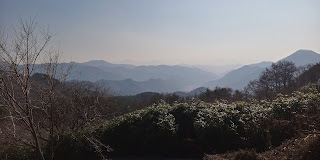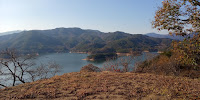Monday, December 28, 2020
getting out of town and into nature
Friday, December 25, 2020
a Glimpse into an old house 운림 고택
Ullim house has a building structure that had been popular in the 19th century. Similarly, the house style of the wealthier Yangban 양반 family, the highest social class in the Joseon period, has separate quarters as influenced by the Confucian culture: male quarters, secondary male quarters, and female quarters. However, this house has extra gates to shut off access to the outside world for the women residing in the house.
Naesi could not be a father, he was still allowed to marry a woman to form a family as the basic unit of Confucian traditional society and adopt a child from another family or an orphan or castrated boy to carry on the family line even though not sharing the same bloodline.
It was inevitable that their stepsons came from diverse families. The Kim family's genealogical record found recently at the shrine includes the names of the male line of descent from the 2nd to the 16th generation, and shows us its descendants had almost different surnames, appearing to be almost unprecedented in Korea.
The institution of Naesi was formally abolished in 1908. The 17th generation descendent was also castrated but didn't work in the palace as a court attendant. Since the 18th generation descendent, they have maintained a normal father-son relationship.
*내시(內侍, Naesi), a Korean movie filmed in 1968
Wednesday, December 16, 2020
cycling through the sky village
It would be interesting for a cyclist to visit some places on the route for the first time in his life.
Friday, November 27, 2020
lakeside Cycling


Wednesday, October 14, 2020
cycling on a hot scorching day
Friday, July 24, 2020
cycling around historic Gyeongju
Monday, July 20, 2020
riverside Cycling
History reminds us that this area used to be a ferocious and bloody battlefield during the Korean War(1950–1953). The North Korean communist army had pushed into the west bank of the river from the north with increasing vigor and watched vigilantly for opportunities to cross the river. Then, the US army was deployed to defend the eastern side of the river and finally succeeded in deterring the enemy attack and preventing the enemy army from crossing the river toward the east.
The southbound cyclists will struggle to ride up a steep uphill named Parkjin pass 박진 고개. Some cyclists claim that this could be one of the toughest sections of the entire bicycle path along Nakdong river. Cyclists can also see various scribbles written in Korean and English along the roadside blocks, which describe their own names, lovers' names, wishes, and occasional foul language as they express themselves during tough climbs.
Tuesday, July 14, 2020
cycling along Coastline
Cycled northwards from Yeongdeok Stadium and turned right past a village named Dogokri 도곡리 in the north and headed eastwards to Chuksan port 축산항. The route either to the south or north from the port leads you to Yeongdeok's most beautiful coastal areas. Panoramic views along the approximately 30 km long coastal road are fabulous. Hiking trails along the east coastline were also launched and named Blue Road. This scenic coastal hiking and cycling are well worth doing.





































